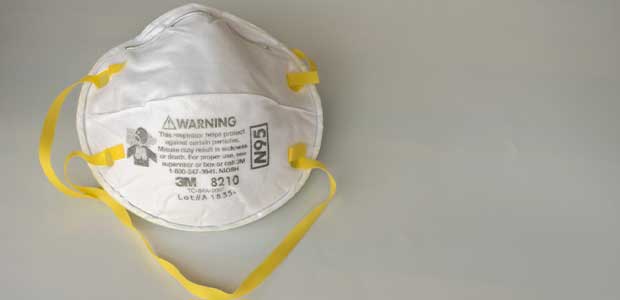
Making the Right Choice: NIOSH Suggestions for Avoiding Counterfeit Respirators
When you're purchasing respirators off a website, there are important elements to be on the lookout for.
- By Alex Saurman
- Nov 08, 2022
The use of PPE is required and essential in multiple industries. But in the last few years, getting some PPE has proven difficult.
In the first few months of the COVID-19 pandemic, access to respirators was especially limited. Thankfully, supply eventually met demand but not before the increased sale of counterfeit and fake PPE. (A few times before the pandemic, the National Institute of Occupational Safety and Health (NIOSH) issued counterfeit respirator notices.)
When workers use counterfeit respirators—defined by NIOSH as “products trying to copy an actual NIOSH Approved model”—they may not be fully protected from all hazards.
In a time where people are still impacted by supply chain issues, how do you know which respirators are real and which are fake? NIOSH provides advice to keep in mind when purchasing respirators for your company from third-party marketplaces.
Language and Key Words. If the words “legitimate” or “genuine” are used, likely, NIOSH said, the products do not meet these standards.
Seller Details. Check out the respirator seller’s profile or website and reviews. Past sales can also be an indication of counterfeit products. A good question to look at, according to NIOSH: “Is the seller marketing the same products over time, or are they mainly selling trending items? Legitimate businesses and suppliers typically sell the same items over time.”
Price. At the end of the day, most people and companies want to save money. Finding a price that’s “too good to be true” might be a warning sign of counterfeit PPE, NIOSH said. Look at the consistency in price as well.
Quantity. Supply chain issues have impacted multiple businesses in the past few years. Any product that promises “unlimited stock,” especially when there’s a shortage, NIOSH said, “could indicate the respirator is not NIOSH approved.”
Contact Information. Do you see contact information on any product photos? According to NIOSH, buyers shouldn’t have to contact the seller outside of the third-party marketplace. This may be a red flag to watch out for.
Shopping on a seller’s website directly? NIOSH also has recommendations to avoid counterfeit respirators on these websites.
Text. Look between the lines. Do you see any big mistakes on the website, like incorrect names or incomplete text? Do you notice grammatical errors?
Contact Information. Find the main email address for the seller. A warning sign may be if the seller uses a “free email service” instead of one that’s “connected to the website,” NIOSH said.
Photo credit: NARONG JHANWATTANA / Shutterstock.com
About the Author
Alex Saurman is a former Content Editor for Occupational Health & Safety,who has since joined OH&S’s client services team. She continues to work closely with OH&S’s editorial team and contributes to the magazine.